At TST Technology, we write great code.
Code that works fast.
Code that doesn't break.
Code that is easy to read, fix, and grow.
But let's be honest, perfect code isn't enough.
Here is what makes us different:
- We don't just focus on the perfection of the code. We focus on who it's for and what problem it solves because even the most elegant system is useless if it doesn't help the customer.
So, what really matters? Solving real problems for real people.
This blog is a reminder (and a guide) on why your engineering team should stop chasing only velocity and start solving the right problems, which is really what matters to the user.
The Problem with Code-First Engineering Culture
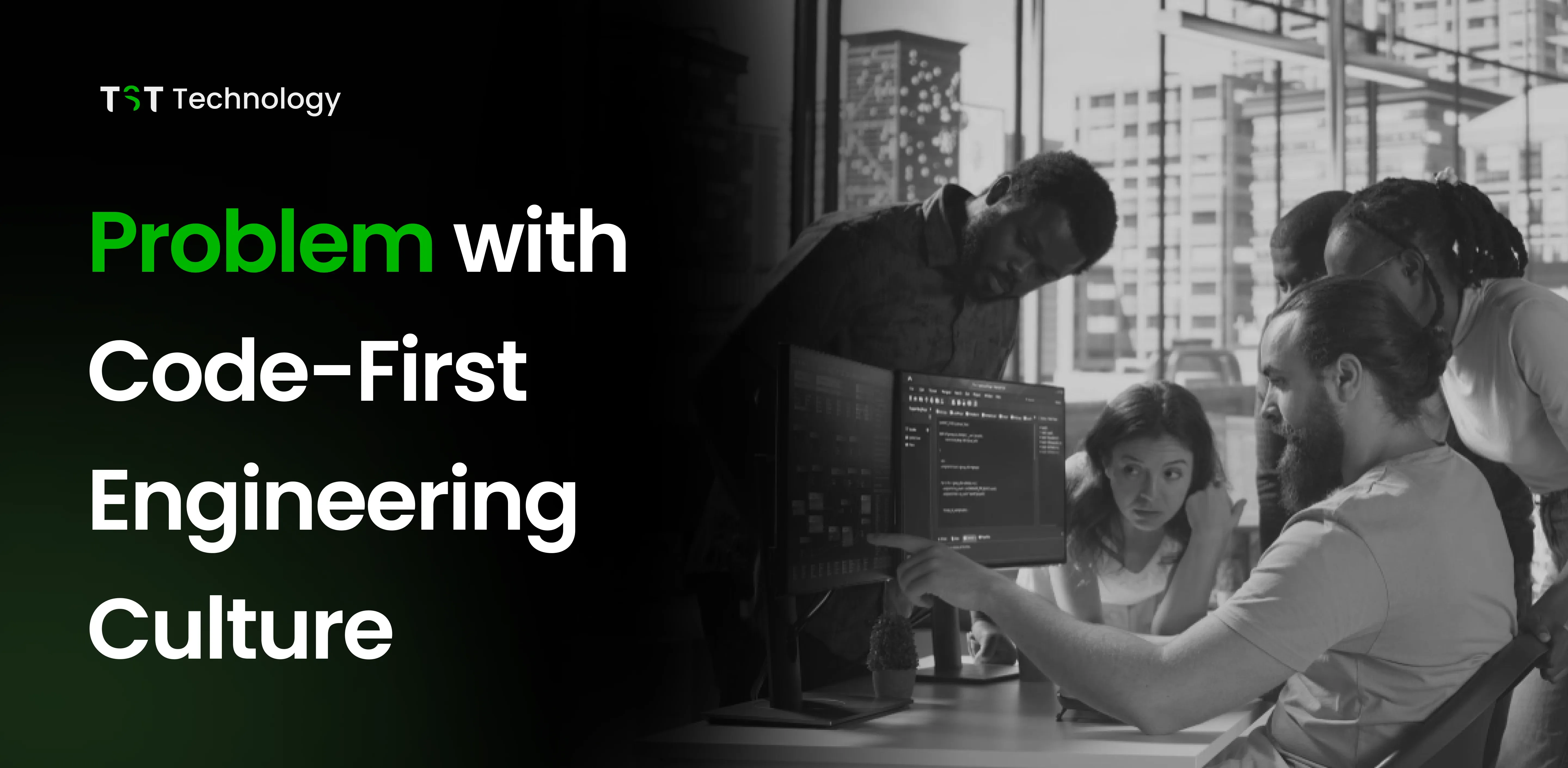
Most Engineering teams don’t usually plan to build the wrong thing, but it happens far too often.
What causes this? This issue comes from the past culture of development. Development tends to favor features, frameworks, and deadlines over the people they are supposed to serve.
Development usually goes like this:
- A feature specification is written.
- Developers race to build it.
- QA signs off.
- It goes live.
On the process, everything looks great: The code is clean. Tests pass. But… customers don't use it.
This is what we call Code-First Thinking, and it leads to some painful outcomes:
Internal priorities
- Teams often become stuck on internal goals, such as code coverage, velocity, and deployment, which can slowly drift away from what the customer needs.
The Technical Trap
- When engineers focus only on technical elegance, they may over-engineer solutions to problems the user doesn't even have.
Research shows that 73% of customers will switch after repeated poor experiences, even if the technology behind the product is perfect.
At TST Technology, we've learned this lesson the hard way and have since redefined our approach to avoid these pitfalls. We've moved from asking, What should we build? to asking, Whose problem are we solving?
From Code-First to Customer-First: Our Mindset Shift
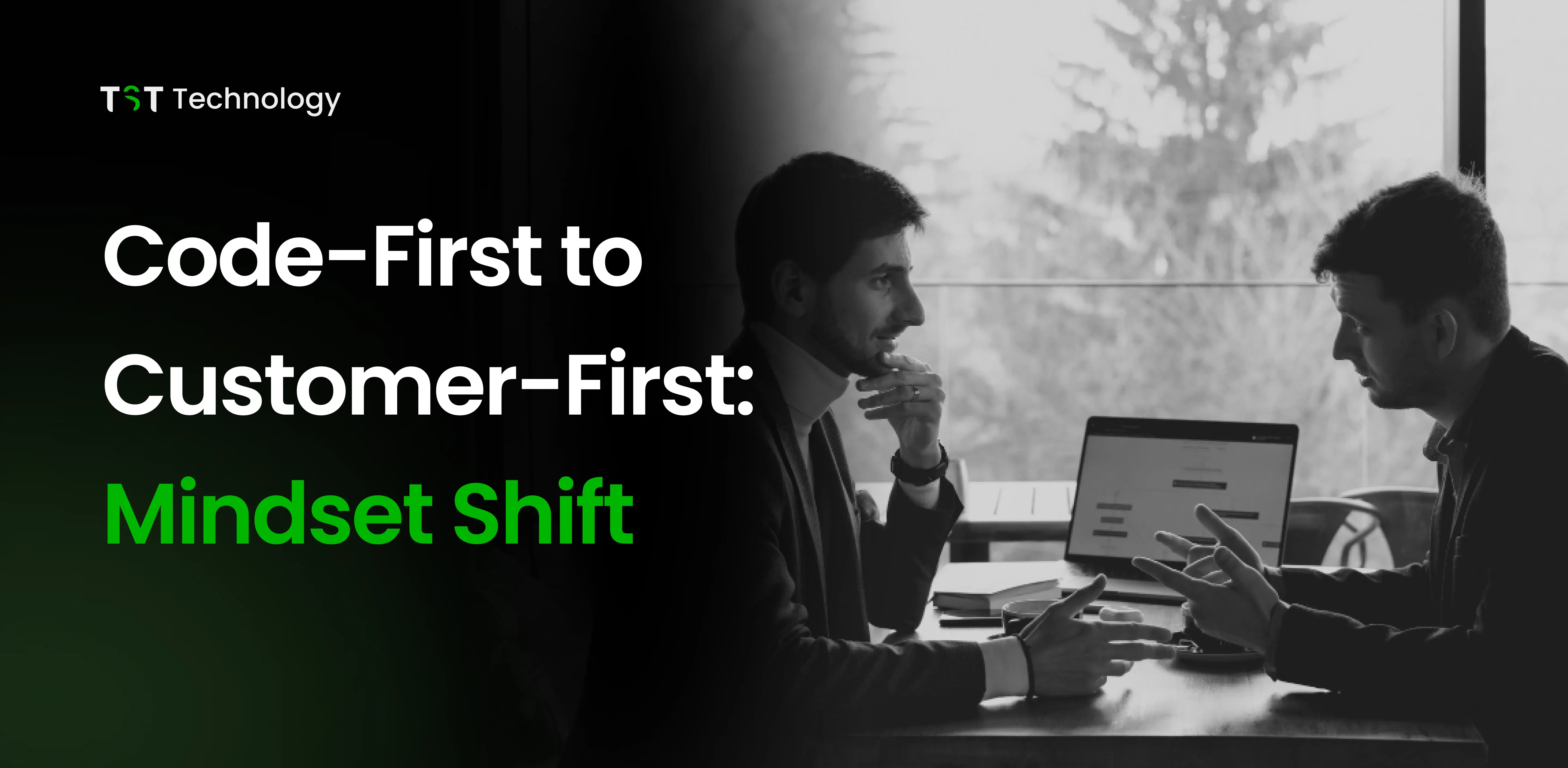
At TST Technology, we realized something crucial: Customers care less about perfect code and more about how it helps them solve their problems.
Companies that systematically validate customer problems see 30% higher customer satisfaction and conduct 70% more successful experiments than those that don't.
Here's how that shift changed our process:
We Start With the Problem, Not the Product
Before we start coding, we ask:
- Who is struggling?
- What are they trying to do?
- Why is their current process failing them?
and
- We analyze a real user's test case.
- We dig through support tickets.
- We observe how customers use (or misuse) tools.
- We validate every assumption.
Only after this do we begin to design and develop solutions.
We don't focus only on Features, We Focus on Outcomes
Instead of asking: what's the next feature?
We ask: what's the next problem to solve?
This subtle change leads to:
- Better prioritization
- Fewer unused features
- More delighted customers
We Balance Engineering Excellence With Customer Impact
Clean code still matters. But it has to do something that matters.
We connect technical decisions to customer outcomes:
- Will this improve speed for the end user?
- Does this reduce friction in their journey?
- Will this save them time or stress?
Framework for Customer Problem-First Development
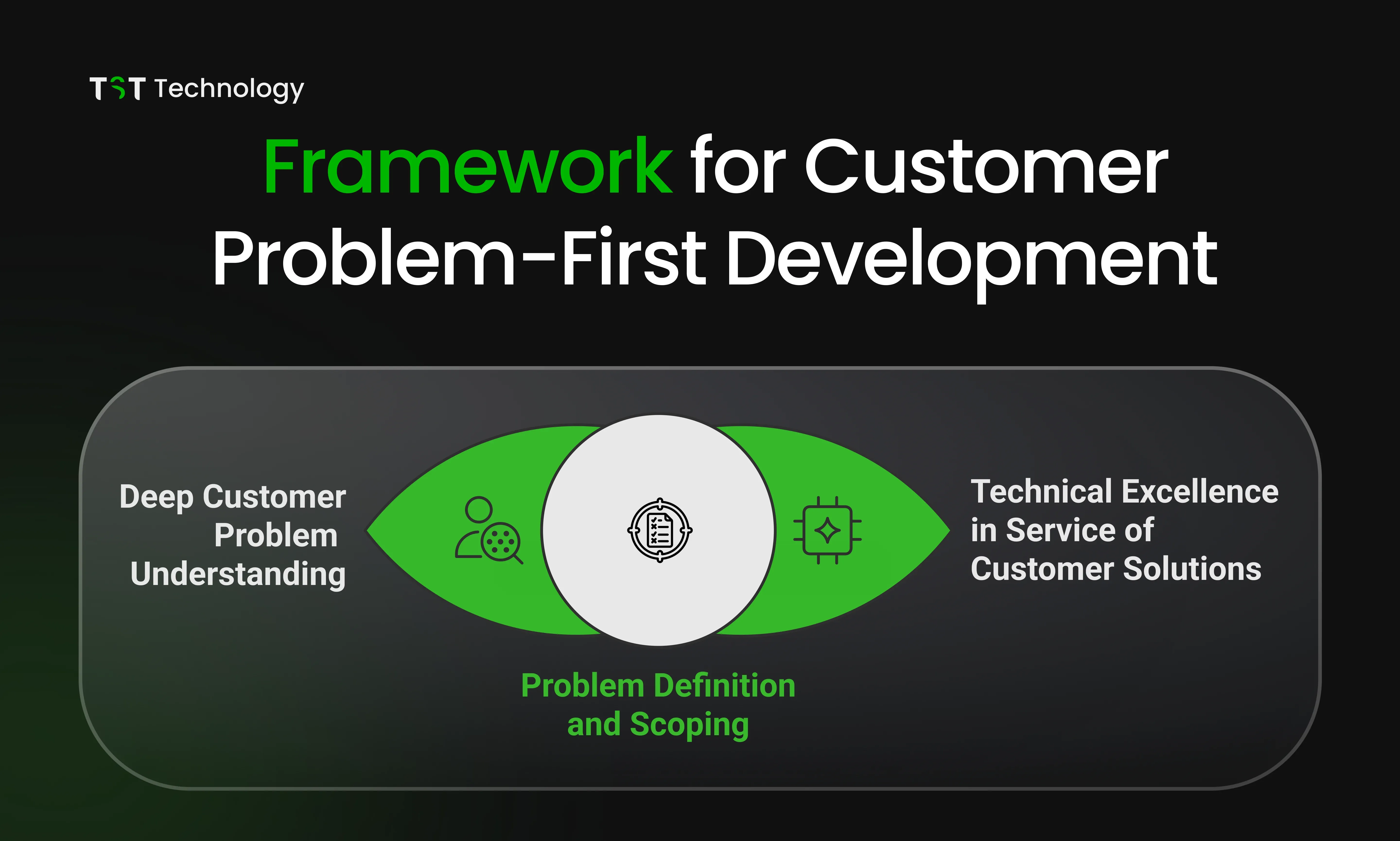
We take a different route that starts with understanding, not assumptions.
Here's our simple yet powerful framework to make sure we always build the right thing, not just build it right.
Step 1: Deep Customer Problem Understanding
The foundation of problem-solving work begins with comprehensive customer problem identification. This involves moving beyond feature requests to understand the root causes of customer challenges. Engineering teams must develop what researchers call "cognitive empathy" - the ability to understand customer problems from the customer's perspective.
Effective problem understanding requires multiple approaches:
- Direct customer observation and interaction to understand real-world usage patterns
- Analysis of support tickets and feedback to identify recurring pain points
- Understanding the full user experience by tracking each step of the customer’s journey
- User research and interviews to validate assumptions about customer needs
Step 2: Problem Definition and Scoping
Once customer problems are identified, engineering teams must clearly define and scope these problems. This crucial step involves transforming vague customer complaints or requests into specific, actionable problem statements that can guide technical development.
The problem definition process should answer three fundamental questions:
- What are we building? (The specific solution approach)
- Why are we building it? (The customer problem being addressed)
- Who are we building it for? (The particular customer segments affected)
Step 3: Technical Excellence in Service of Customer Solutions
With a clear problem definition established, engineering teams can apply their technical expertise to create solutions that are both technically excellent and customer-focused.
This approach ensures that perfect code serves a purpose beyond technical achievement.
The key is balancing technical excellence with customer satisfaction by:
- Connecting technical decisions to customer outcomes
- Measuring technical metrics alongside customer impact metrics
- Iterating based on customer feedback while maintaining code quality.
This framework is how we make sure every line of code matters, not just to us, but to the people using it.
Implementation Strategies for Problem-Solving Work
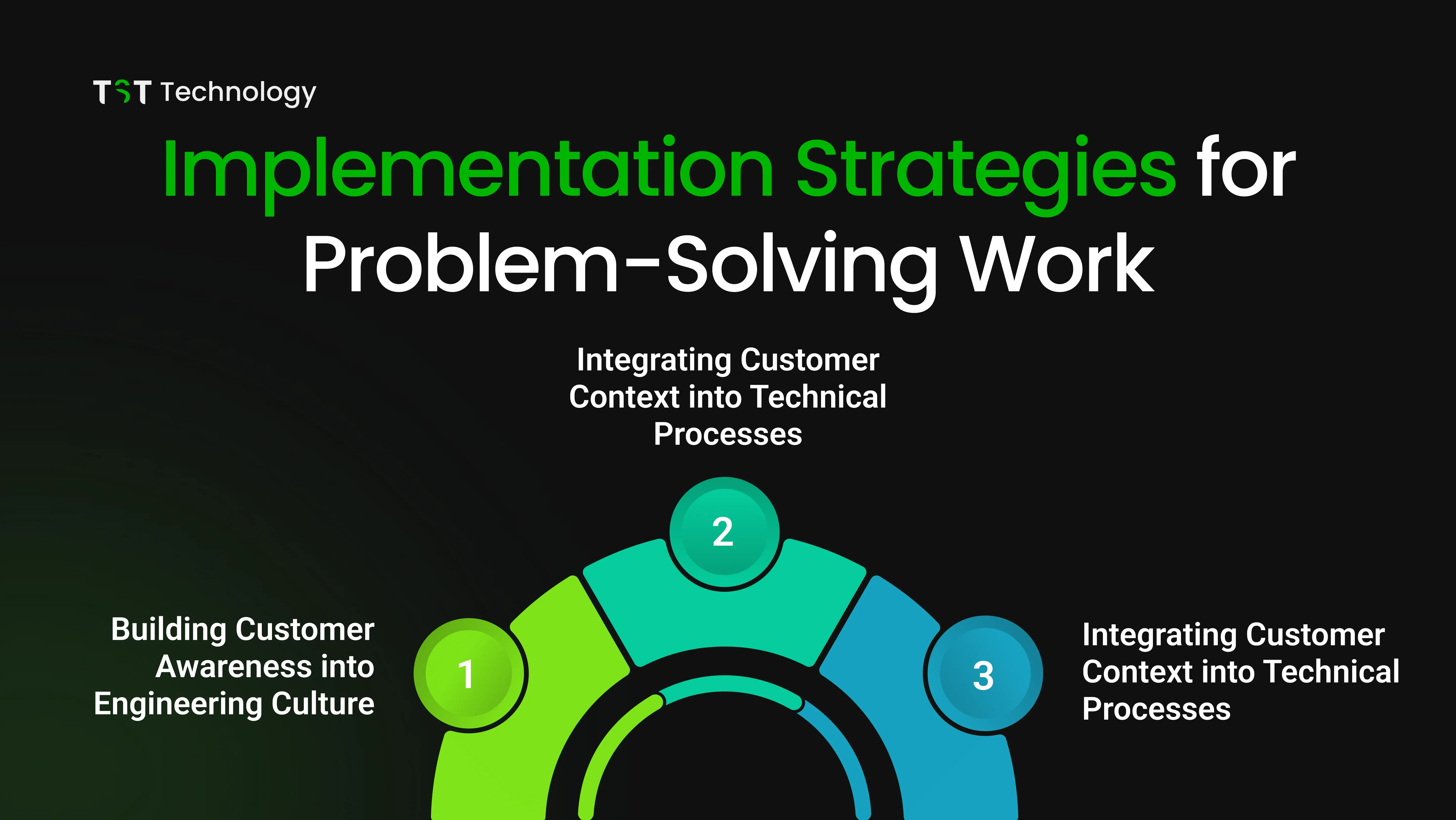
At most companies, engineers are kept far from the customer.
We believe that the best technical decisions come from teams who understand the people they're building for. That's why we've built customer awareness directly into our engineering culture, not as a one-time initiative, but as a daily habit.
Building Customer Awareness into Engineering Culture
Building a customer-focused engineering culture means changing how teams work. It's not just about changing how people think; it's also about changing the company’s structure, its daily processes, and how it rewards teams. Everything should support solving real customer problems.
Engineering leaders can foster this culture by:
- Making customer feedback visible in regular team meetings
- Celebrating engineers who identify and solve customer problems
- Including customer impact metrics in performance evaluations
- Providing opportunities for engineers to interact directly with customers
This culture shift didn't happen overnight. But by making customer context part of how we think, plan, and build, we've built a team that naturally creates better software.
Integrating Customer Context into Technical Processes
Successful problem-solving work requires integrating customer context into all technical processes. This integration ensures that even the most technical decisions consider customer impact and business value.
Practical integration strategies include:
- Including customer stories in sprint planning sessions
- Reviewing customer feedback during code reviews
- Testing solutions against customer use cases
- Tracking customer satisfaction metrics alongside technical performance metrics
Developing Problem-Solving Methodologies
Engineering teams need structured approaches to problem-solving that combine technical rigor with customer focus. These methodologies should guide teams from problem identification through solution implementation and validation.
Effective problem-solving methodologies incorporate:
- Systematic problem identification and analysis
- Root cause analysis to understand underlying issues
- Solution brainstorming and evaluation
- Iterative testing and refinement based on customer feedback
Measuring Success in Problem-Solving Work
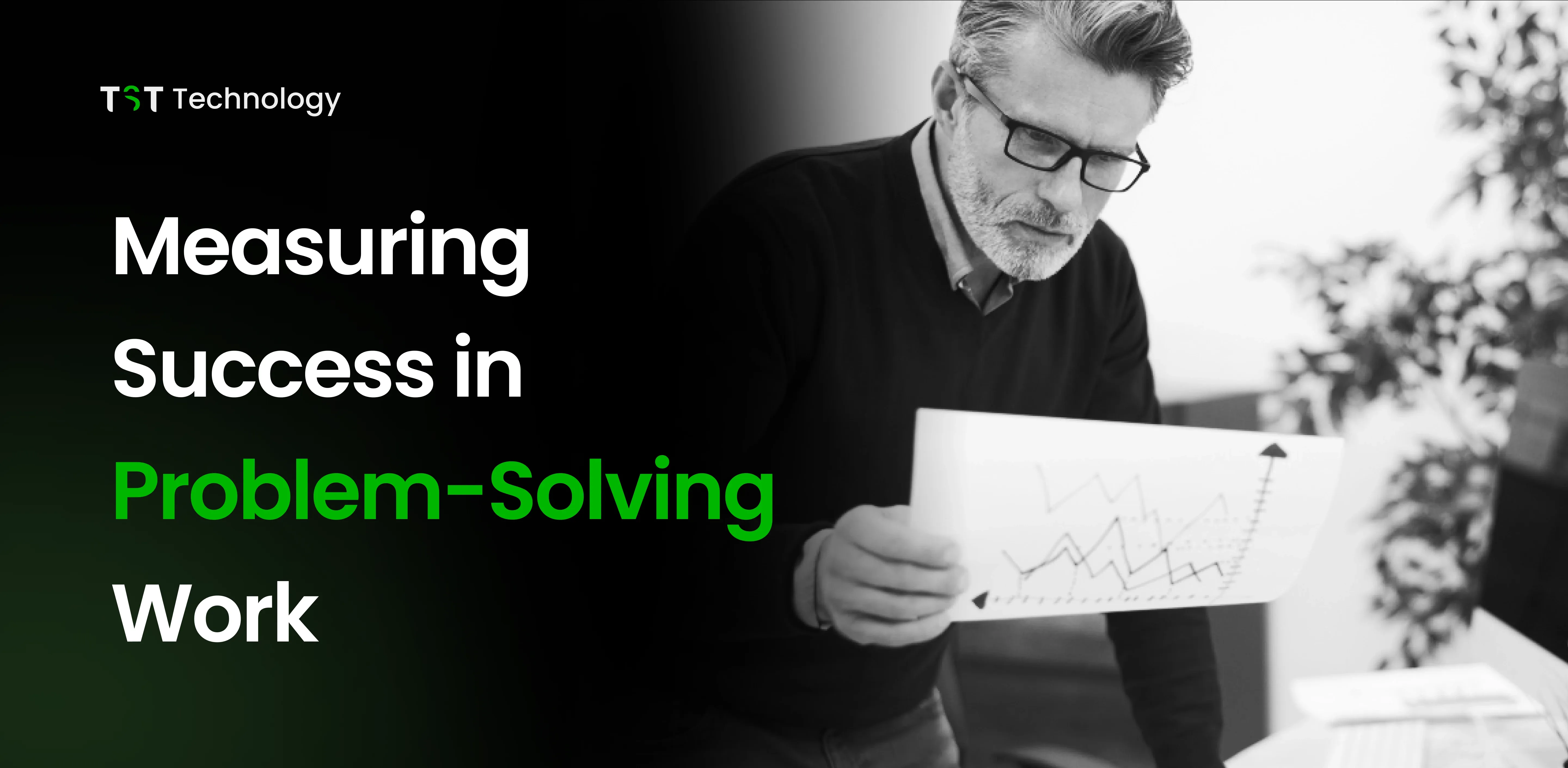
Customer-Centric Engineering Metrics
Traditional engineering metrics like lines of code, bug counts, and deployment frequency remain important, but they must be balanced with customer-centric measures. Teams focused on problem-solving work track metrics that directly correlate with customer value creation.
Key customer-centric metrics include:
- Customer problem resolution time and effectiveness
- User adoption and engagement with new features
- Customer satisfaction scores related to technical solutions
- Business impact of technical improvements
The Technical Excellence + Customer Value Framework
The most successful engineering teams achieve both technical excellence and customer satisfaction by treating these goals as complementary rather than competing. This framework recognizes that sustainable technical excellence requires customer validation and business success.
This integrated approach measures success through:
- Technical quality metrics that support customer experience
- Customer feedback that validates technical decisions
- Business outcomes that justify technical investments
- Long-term sustainability of both technical and customer solutions
Overcoming Common Implementation Challenges
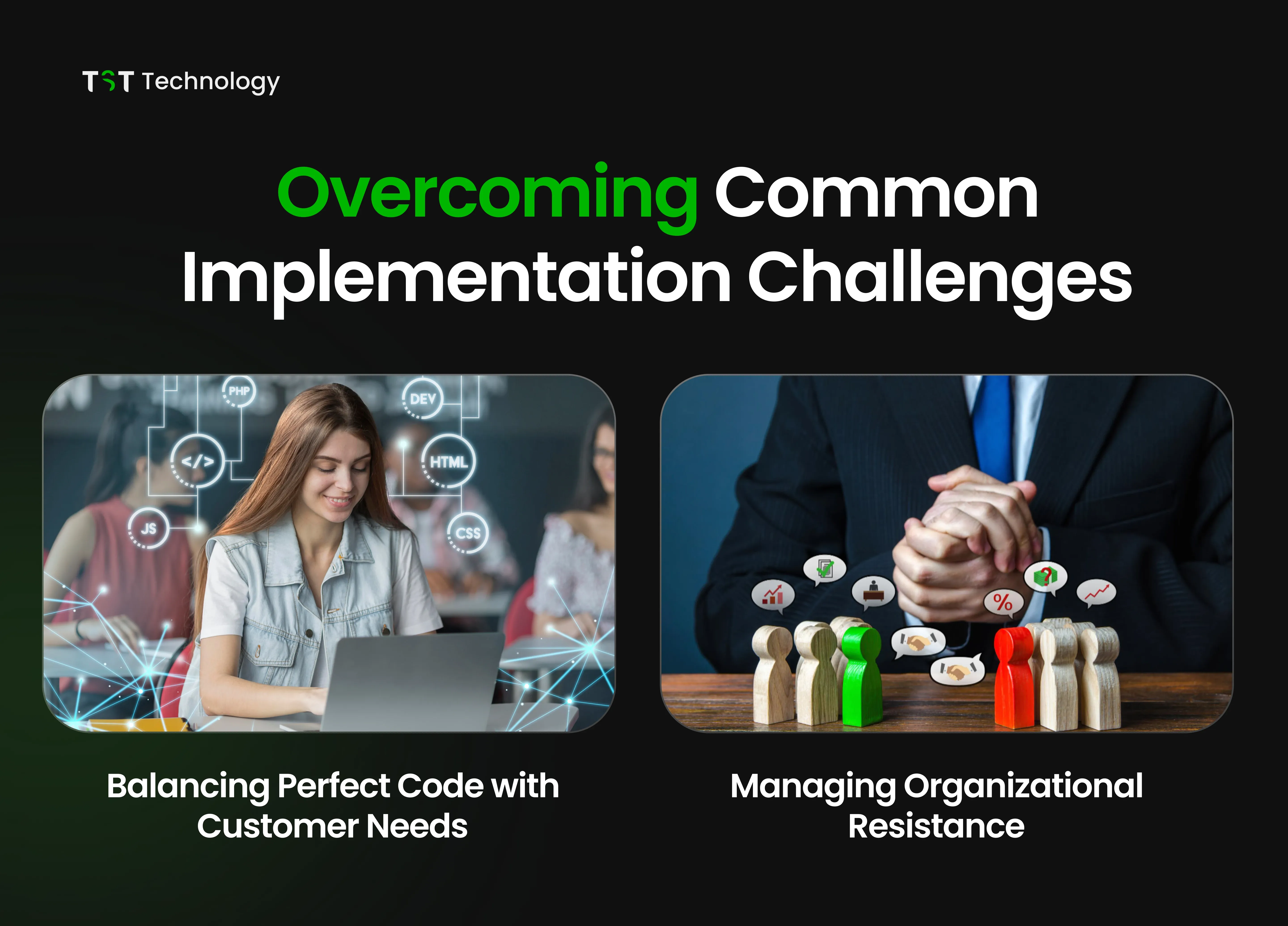
Balancing Perfect Code with Customer Needs
One common concern among engineering teams is whether focusing on customer problems will compromise technical quality. However, research demonstrates that customer context actually improves technical decision-making by providing clear criteria for evaluating technical choices.
When engineers understand customer problems, they can:
- Make more informed architectural decisions
- Prioritize technical debt that impacts customer experience
- Choose technologies and approaches that best serve customer needs
- Optimize performance for real-world usage patterns
Managing Organizational Resistance
Changing the engineering mindset from focusing only on code to putting customers first is often met with pushback. People usually worry that this shift might lower technical quality or disrupt their usual way of working.
Successful transformations address resistance by:
- Demonstrating how customer focus enhances rather than diminishes technical excellence
- Providing training and support for new problem-solving approaches
- Creating success stories that showcase the benefits of customer-centric development
- Gradually implementing changes rather than attempting wholesale transformation
Long-Term Strategic Benefits
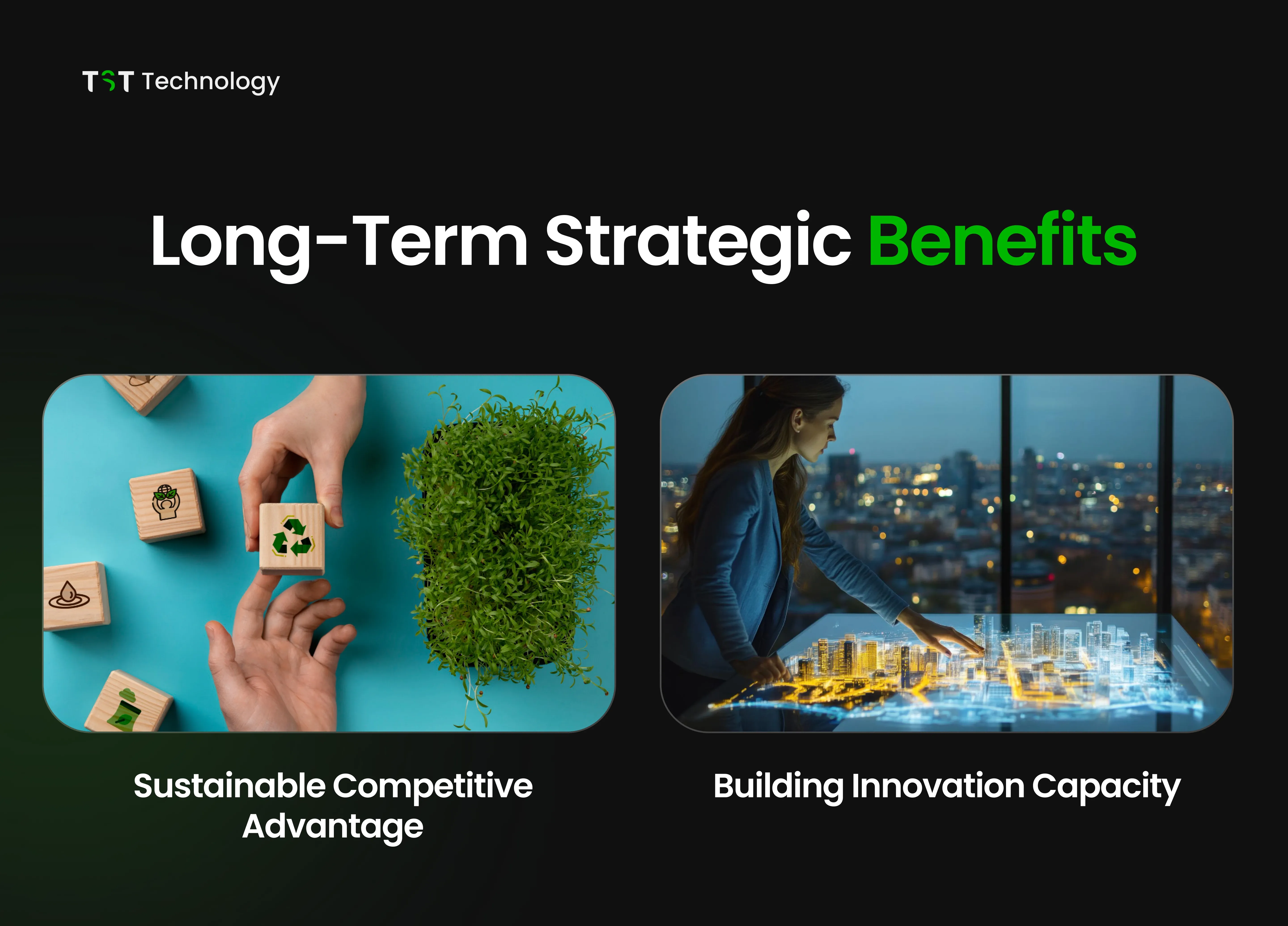
Sustainable Competitive Advantage Through Problem-Solving Excellence
Organizations that successfully implement customer problem-first approaches while maintaining technical excellence create sustainable competitive advantages. These advantages stem from their ability to deliver solutions that customers actually need and value consistently.
The strategic benefits include:
- Higher customer retention and loyalty
- Reduced development waste on unused features
- Improved team engagement and motivation
- Better alignment between technical investments and business outcomes
Building Innovation Capacity
Teams that excel at problem-solving work develop enhanced innovation capabilities. By deeply understanding customer problems and maintaining technical excellence, these teams can create breakthrough solutions that competitors struggle to match.
This innovation capacity manifests through:
- Ability to identify and solve previously unrecognized customer problems
- Technical solutions that elegantly address multiple customer needs
- Rapid iteration and improvement based on customer feedback
- Culture of continuous learning and adaptation
Conclusion
The path forward for engineering teams lies not in choosing between perfect code and customer focus, but in achieving both through problem-solving work that puts customer needs first.
Perfect code becomes truly perfect when it perfectly solves real customer problems. This represents the future of engineering excellence, where technical mastery and customer empathy combine to create solutions that are both beautifully crafted and genuinely valuable.
If your engineering team is chasing velocity, code coverage, or release date, pause and ask: Is this really helping our user?
Want to talk about how we can solve your next big problem? Contact us now for your solution.






